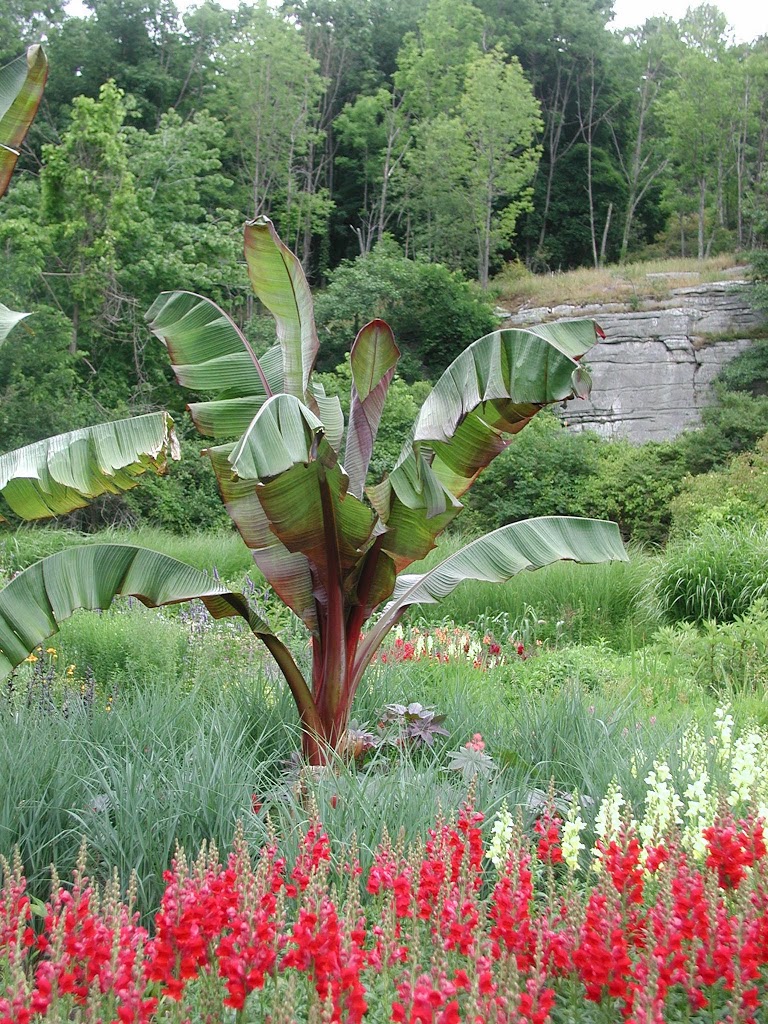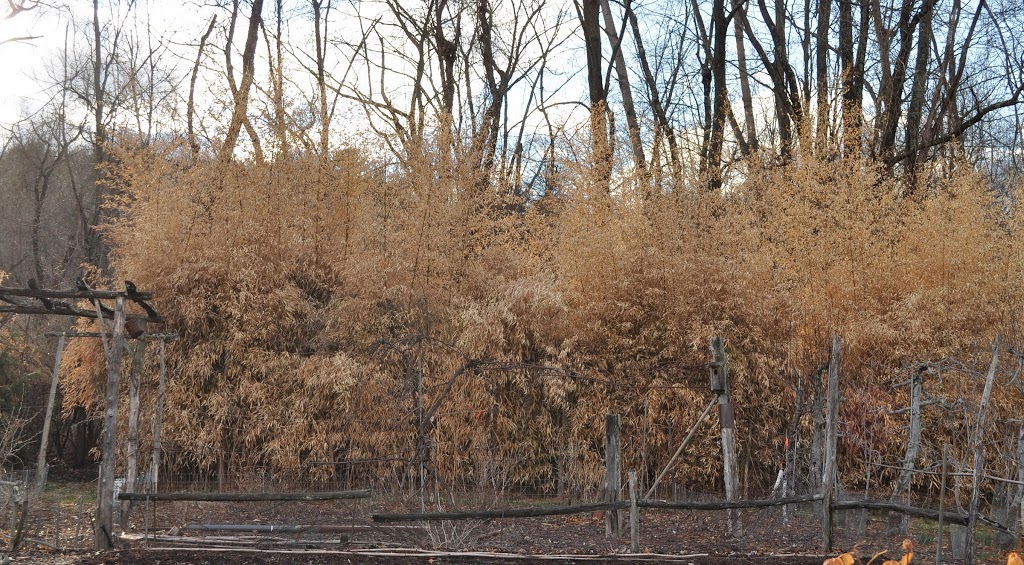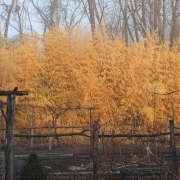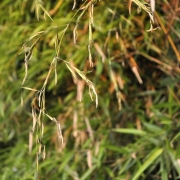Yes, we have no bananas. We do have a banana tree.
Decades ago I was in a similar situation. How could I resist a catalog ad for a dwarf banana tree, one that wouldn’t grow more than 6 to 8 feet high, so could be accommodated within the confines of a standard room? I bought the small pup, which is what small, plantable offshoots from the mother tree are called, and planted it in a large pot. The pup grew. And grew. And grew. The plant topped out at 6 to 8 feet but the developing leaves, rolled up and pointing skyward before unrolling and flopping down, reached a lot higher. Banana isn’t really a tree; it’s a giant herb whose “trunk” is, in fact, made up of concentric layers of rolled up leaves that don’t flop down to a more horizontal position until they unroll.
“A mature tree only gets 6-8 feet tall, but provides up to 90 bananas per year!” states a contemporary web ad for Cavendish dwarf banana. As for the 90 bananas, yes, I had no bananas. Bananas are tropical
plants, thriving best in full sunlight with average annual temperatures around 80°. A sunny room in winter is no home for a banana. The room was cool, not tropical, and, though bright, its light paled against a sunny day in the tropics.
Besides delaying or voiding any possibility of fruiting, indoor conditions left my plant looking forlorn, even if it did perk up each summer outdoors. Upon my return from a winter trip to the tropics where I had seen banana plants reveling in sun, heat, and humidity, I took pity on my Dwarf Cavendish and granted it eternal afterlife in my compost pile.
————————————————
Last spring, my friend Sara (of last week’s grafted tomato fame) stopped by with a gift: A banana plant, evidently another a Dwarf Cavendish Banana judging from the decorative reddish splotches on the leaves. How could I refuse such a plant, recently removed from a greenhouse, in all its lushness.
In the decades since my old banana’s passing, banana plants have become more popular as ornamentals. The plants grow rapidly, so a non-dwarf variety, once summer heat kicks in, will soar quickly to 10 feet or more to create the focal point of a tropical oasis. You’d need a big pot to fuel such growth. Or you could plant Mekong Giant Banana (Musa itinerans var. xishuangbannaensis) or Golden Lotus Flower (Musella lasiocarpa), both closely related to the edible banana but — and here’s a big difference — very winter cold-hardy (for bananas). Either plant (available from www.onegreenworld.com and www.raintree.com) could remain outdoors, with mulch, through winters with temperatures well below zero degrees . The tops die back but the roots survive to resprout each year. Who wants to see a tropical oasis in the snow anyhow?
Dwarf Cavendish is not a hardy banana and does not reach proportions to create anything more than a mini-oasis. Still, my new one is weathering winter well. My original plan was to bring the potted plant down
to remain semi-comatose in the cold basement. But it started out in autumn near a sunny window in a cool room and never made it down the steps. It looks forlorn but ready to perk up after conditions change. And small, because it’s cramped into an undersized pot. I haven’t watered it for months! I don’t want it to grow — yet.
Come spring, Dwarf Cavendish will get repotted, pups removed and potted, and given good growing conditions. One pup will get planted outdoors to get as big as it can before cold weather, then dug up and put in the basement. Even if “Yes, we have no bananas,” there will be leaves aplenty for cooking, wrapping, serving food, and general tropical lushness.
————————————————
Not that New York bananas are an impossibility without a old-fashioned, energy-guzzling hothouse. Given an early start in my barely heated greenhouse, a short-season banana might actually ripen its fruit this far north. A guy in Georgia has found that the variety Veinte Cohol (www.logees.com) will ripen its fruit in October if it’s 2 to 3 feet tall going into summer. My greenhouse is something like Georgia, without the drawl.
————————————————
All this talk of bananas is admittedly odd with morning temperatures here hovering below zero degrees. This winter has been interesting, seemingly cold but only in comparison with the relatively warm winters of the past decade or so.
The low here, so far, has been minus 14 degrees. The effect is already evident on my bamboo, Phyllostachys aureosulcata, whose leaves, though still attached, are dry and muted green. They were
supposed to remain alive, looking shiny and lush green, down to minus 20°. But the cold came on quickly this season, before plants had a chance to acclimate, and there were extended periods of it. Rainfall, snowfall, and humidity also have direct and indirect effects on how well plants face cold. For plants “it’s not how cold it gets, it’s how it gets cold.”










I am getting some friends some dwarf citrus from stark bros. this year. Hopefully they get fruit off of them eventually!! It’s nice to know your luck with the bananas- they do sound appealing on the nursery websites, but bananas are so cheap in the store! I watched a really interesting video (It was on netflix or youtube, but I can’t seem to find it now!) about a banana breeder who has been breeding bananas hoping to find the next banana which will replace the cavendish. There is only 1 seed in every 10,000 bananas or something crazy like that, so they grow all those seeds into trees and then see if any can withstand the disease that’s killing them off. Really interesting, wish I could find it and post it here!
Excellent write-up. I definitely love this website. Stick with it!
Check out my web blog … wasni
I am always searching online for articles that can help me. There is obviously a lot to know about this. I think you made some good points in Features also. Very helpful information, thank you! Chris Johnson